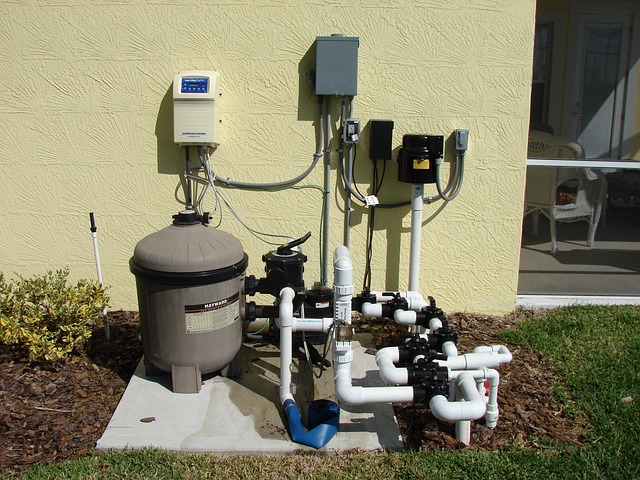Understanding Error Codes and Diagnostics for Modern Washers
Modern washers use digital diagnostics and error codes to simplify troubleshooting for household laundry appliances. This guide outlines common error-code behavior, what sensors and components are typically involved, and practical steps to interpret codes safely. It is written for readers seeking a clearer approach to appliance maintenance and basic repair decisions.

Many modern washing machines include built-in diagnostics that display error codes when something goes wrong. These codes are shorthand for detected faults involving the drum, motor, valves, hoses, sensors, or electronics. Understanding what a code is communicating helps with faster troubleshooting and more accurate maintenance decisions, whether you plan simple DIY checks or need to consult local services for complex parts or installation tasks.
How do diagnostics and error codes work?
Error codes are generated when a washer’s control board receives signals outside expected ranges from sensors or actuators. Diagnostics routines test timers, temperature sensors, water-level sensors, door locks, and motor feedback during cycles. When a value is out of tolerance—such as a blocked drainage flow or a failed spin sensor—the board stores a code and often stops the cycle to protect the appliance and clothing. Learning how to read your washer’s manual or manufacturer code list is the first step in effective troubleshooting and reduces unnecessary part replacement.
What do codes reveal about the drum and motor?
Codes that reference the drum or motor typically point to issues with rotation, load imbalance, or motor control. Symptoms include a washer that won’t spin, makes grinding noises, or vibrates excessively during spin cycles. Troubleshooting starts with checking for obstructions in the drum, verifying that the load is balanced, and listening for bearing or motor noise. If the motor controller reports a lack of tachometer signal, the problem can be electrical or mechanical; safe diagnosis requires power-off inspections of wiring, connectors, and motor brushes or inverter circuits in models that use them.
How to check valves, hoses, and drainage for faults?
Water inlet valves, drain hoses, and pump assemblies commonly cause error codes related to filling or emptying. If a machine shows a fill error, inspect the inlet valve screens, water pressure, and hoses for kinks. Drainage or pump error codes often result from clogs in the pump, lint traps, or drainage hose. Clearing blockages and ensuring proper hose routing can resolve many issues. For clogs that are not visible, consult the manual to access the pump area safely—disconnect power first—and remove trapped debris from impellers or filters.
When should seals, belts, and other parts be inspected?
Seals, belts, and gaskets are wear items exposed to constant motion and moisture; they appear in maintenance and error diagnostics when leaks or mechanical slips are detected. A water leak, unusual smell, or reduced spin speed can indicate a damaged seal or a stretched belt. Inspection requires removing panels or access covers per the manufacturer’s instructions. Replacing worn seals or belts often resolves mechanical error codes, but matching parts precisely to the model is important for correct installation and reliable operation.
What installation and maintenance steps affect energy and efficiency?
Proper installation and ongoing maintenance directly influence energy efficiency and the frequency of fault codes. Leveling the appliance, using correct water hookups, and verifying drainage height help the washer run without excessive strain. Routine care—cleaning filters, descaling in hard-water areas, and avoiding overloading—reduces motor and pump stress. Energy-efficient cycles often rely on accurate sensors; keeping sensors and detergent drawers clean ensures accurate thermistors and water-level readings, which in turn prevents unnecessary diagnostic faults.
How to balance DIY troubleshooting and professional help?
Basic diagnostics—reading codes, checking hoses for clogs, and inspecting visible parts—are appropriate for many homeowners, but some faults require tools and training. Electrical failures, sealed-system repairs, and control-board faults are safer and more reliable when handled by qualified technicians. When choosing local services, provide the exact error code, model number, and a description of symptoms to help technicians prepare for correct parts and procedures. Documenting what you checked and any error-code patterns will speed professional diagnostics and reduce time spent on repeat service calls.
Errors and diagnostics are intended to make laundry appliance problems more transparent, not to replace careful maintenance and correct installation. Interpreting codes accurately leads to targeted troubleshooting—whether that means clearing a clog, replacing a worn seal, or contacting a trained technician for motor or electronic faults. Clear records of codes and symptoms help maintainers resolve issues efficiently and support longer-lasting, energy-efficient washer operation.






